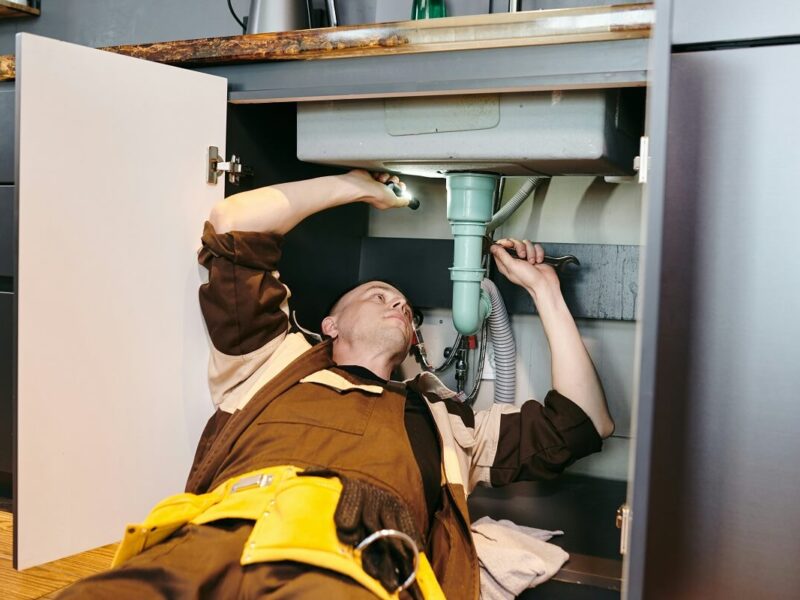They are making a few great points on Plumbing Basics For Every Home: The HomeTriangle Guide in general in this great article just below.

Plumbing is a necessary element of any kind of home, responsible for supplying tidy water for alcohol consumption, food preparation, and showering, in addition to eliminating wastewater safely. Understanding the essentials of home plumbing is crucial for every homeowner to make certain appropriate maintenance, troubleshooting, and, if required, repair work. In this novice's guide, we'll cover the basic ideas of home plumbing to assist you come to be much more familiar with exactly how it works.
Water System
The water system brings clean water right into your home from a local water source or an exclusive well. It includes a main water line that attaches to your home's plumbing system, generally situated underground. A water meter determines the amount of water consumed, while a shut-off valve enables you to manage the flow of water right into your home.
Plumbing Fixtures
Plumbing fixtures are tools that deliver water to numerous parts of your home and include sinks, faucets, commodes, showers, tubs, and appliances such as dish washers and cleaning machines. Each fixture is attached to the water system by means of pipelines and fittings and might have its shut-off valve for upkeep or emergencies.
Water Furnace
The water heater is accountable for home heating water for domestic use, consisting of showering, food preparation, and cleansing. Common sorts of hot water heater include tank-type hot water heater, tankless (on-demand) hot water heater, and heat pump water heaters. The water heater is connected to the water supply system and provides warm water to plumbing components as needed.
Drainage System
The drain system removes wastewater from your home and lugs it away to a sewage treatment center or septic tank. It contains a network of pipes, installations, and components that transport wastewater from plumbing fixtures to the major sewer line or septic tank. Correct water drainage is essential to avoid blockages, backups, and sewage leakages.
Ventilation System
The ventilation system helps maintain appropriate air pressure and stop sewage system gases from entering your home. Air vent pipelines, also known as vent stacks, expand from plumbing components to the roof, permitting sewer gases to get away safely outdoors. Air flow pipes likewise allow air to enter the water drainage system, promoting smooth wastewater flow and protecting against suction or vacuum impacts.
Common Plumbing Tools
Having the right devices on hand is crucial for executing basic plumbing fixings and upkeep tasks. Typical plumbing devices include flexible wrenches, monkey wrench, pliers, pipeline cutters, hacksaws, plungers, augers (or drainpipe serpents), and Teflon tape. Having these tools readily available can help you deal with minor plumbing concerns successfully.
Fundamental Plumbing Repair Work
While some plumbing repair work may require specialist help, numerous common concerns can be attended to with fundamental DIY strategies. Discovering exactly how to fix a dripping faucet, unclog a drainpipe, replace a commode flapper, or repair a trickling showerhead can conserve you time and money on plumbing fixings.
Final thought
Understanding the essentials of home plumbing is vital for every home owner to preserve a safe, useful, and efficient plumbing system. By acquainting yourself with the water system, plumbing fixtures, drainage system, air flow system, common plumbing devices, and basic repair work, you can confidently resolve small plumbing concerns and guarantee your home's plumbing system operates smoothly.
Understanding Basics of Home Plumbing System: A Beginner's Guide
The Main Components of Your Home Plumbing System
The Water Supply System
This system is responsible for transporting fresh water into your home. It usually has a main water line that splits into two branches: one directed towards cold water services and the other connected to a water heater for hot water. The pressure is key here; it ensures water reaches all parts of your house.
The Drainage System
Once water has been used, it becomes wastewater that needs to be removed from your home. This is where the drainage system comes into play. It includes all the pipes that carry wastewater and sewage away from your house to sewage treatment facilities or septic tanks.
The Vent System
The vent system prevents sewer gases from entering your home and helps maintain the pressure balance that allows wastewater to flow out properly. These vents usually exit through the roof of your house.
Water Heating System
For those who enjoy hot showers or using hot water for cleaning, the water heater is a crucial part of the plumbing system. It can be a tankless system, which heats water on demand, or a traditional water tank model.
Common Plumbing Problems and Basic Troubleshooting
Plumbing systems, while designed to be durable, can face issues like clogged drains, leaky faucets, or low water pressure. Here are some basic troubleshooting tips:
Clogged Drains
Use a plunger or a plumber's snake to try and dislodge whatever is blocking the drain. Regular cleaning can prevent clogs.
Leaky Faucets
Often caused by worn-out washers or gaskets, these can usually be replaced by someone with basic DIY skills.
Low Water Pressure
This might be due to sediment build-up in your fixtures or a leak somewhere in your water line. Cleaning out aerators or seeking a professional to detect leaks might be necessary.
Preventive Maintenance Tips
Maintaining your plumbing system is key to avoiding emergencies. Regularly check for leaks, avoid disposing of grease down the sink, and have your system inspected by a professional plumber at least once a year.

As a person who reads on Plumbing basics: How your home plumbing works, I imagined sharing that segment was sensible. Please take the opportunity to promote this write-up if you enjoyed it. I am grateful for your time. Please visit our website back soon.
Call Us Today
Comments on “Understanding the Foundations of Home Plumbing: A Beginner's Primer”